Southwest Michigan field crop update – May 21, 2020
High rainfall totals from this past week have put field work on hold, but warmer weather is on the way to get planted crops up and growing.

Weather update
Growing degree days are not much improved from last week and we are still roughly two weeks behind normal. However, with the forecast for the coming week, we should begin to catch up fairly quickly. Soil temperatures at the 2-inch depth are now well above 50 degrees Fahrenheit, so we are beyond any concerns about seed germination. For example, with average soil temperatures of 60 F, we would expect corn to emerge within 10 days (80-120 growing degree days) with soybean perhaps three to five days beyond that. Once emergence has occurred, crop development progress projections can switch to using growing degree days (GDDs) base 50 based on air temperatures.
The real story this past week has clearly been the high rainfall in the eastern Midwest. Totals of 2-4 inches were most common toward the western half of the region and 4-6-plus inches toward the eastern side. Ponding in lower areas was common even on lighter soils, and some low-level stream flooding was prevalent. With warmer and sunny conditions with light winds the last few days, soils are drying out nicely, but it may be a challenge to get more field work done before the next round of rain forecasted for Sunday through mid-week next week. The outlook for the remainder of May and perhaps the first week of June calls for warmer than normal temperatures and normal to slightly above normal precipitation.
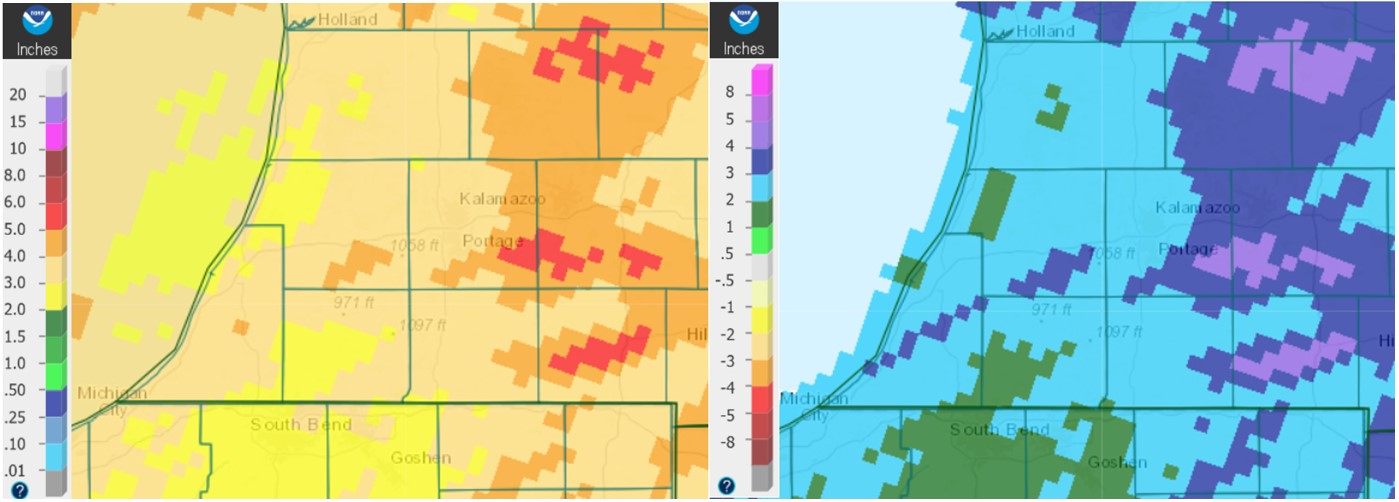

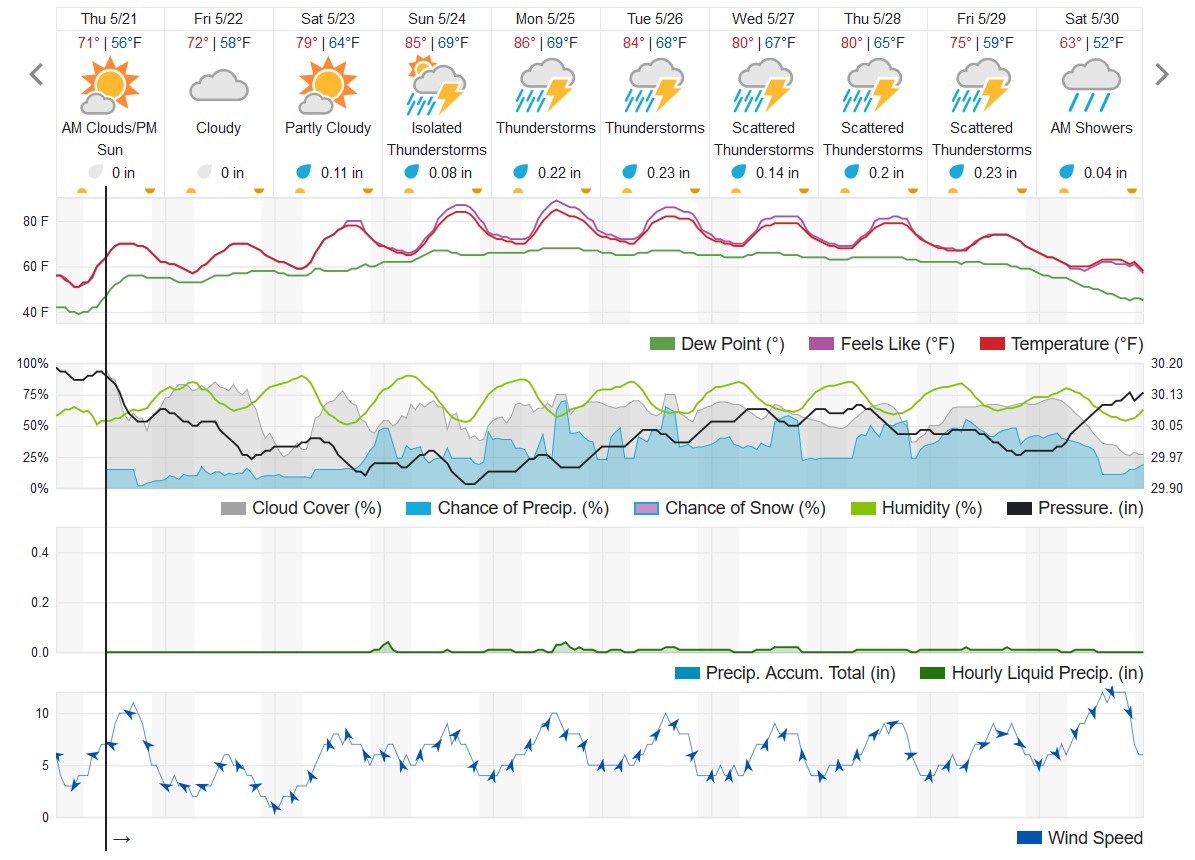
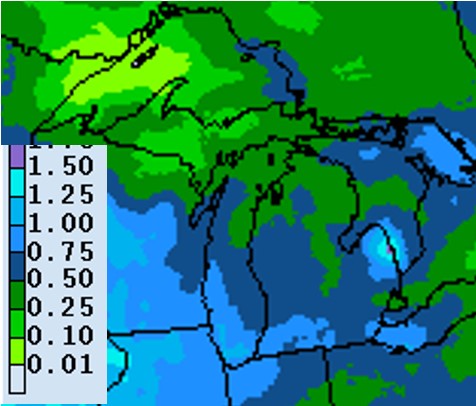
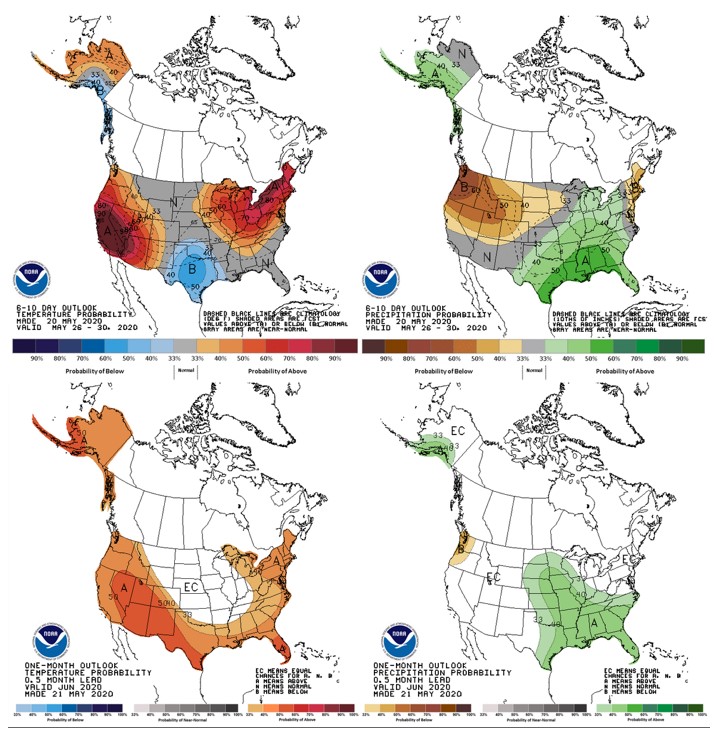
Crop update
Corn and soybean
As of May 17, 59% of the corn crop in Michigan was planted, 15% more than the five-year average. Due to the cold temperatures this past month, we are still slightly behind with crop emergence with only 11% of corn emerged. Similar progress was made in soybean with 56% planted (more than double the average) and 11% emerged. Soybean that was questionable after the May 9 freeze event should be scouted to look for any growth—if you don’t see new growth from those plants, they are dead. By now, you should be able to assess the stand and decide whether any remediation is needed. For crops that were planted within 48 hours of that freeze event, you may need to wait another one to two weeks before you’ll be able to tell whether any chilling injury to the seed occurred.
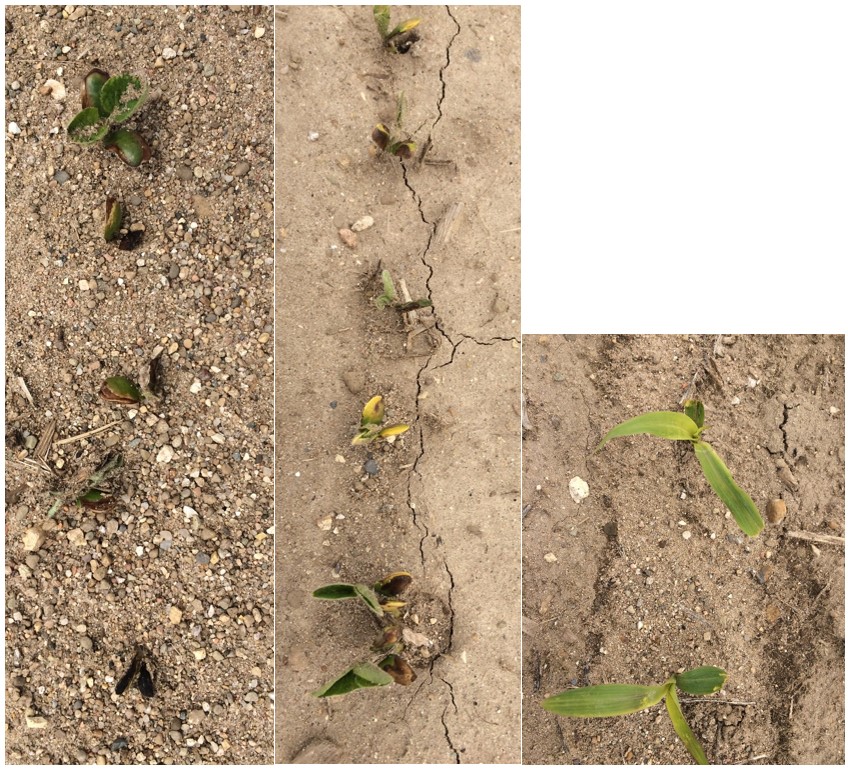
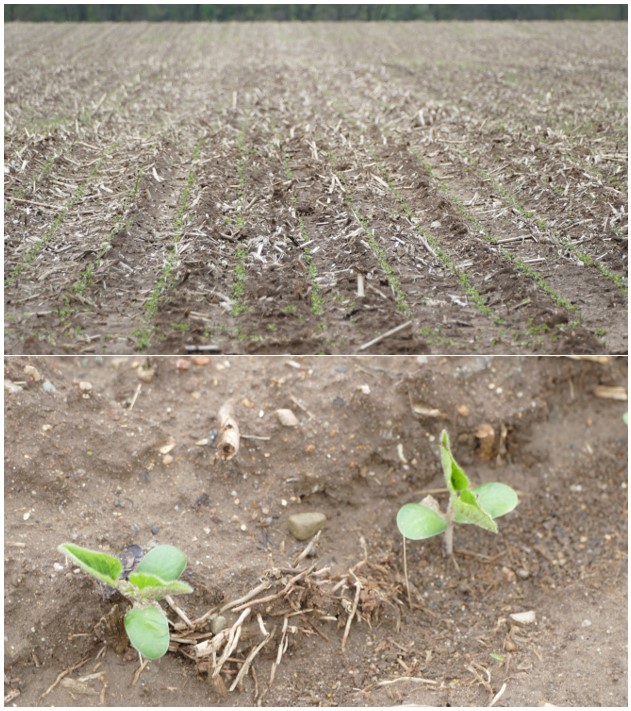
Wheat/small grains
Winter wheat continues to look good this season with 61% rated good or excellent and another 27% rated fair. Only 1% of wheat in the state has headed. One field I visited was at Feeke’s 7-8 with three nodes and the flag leaf just emerged. This is a key management stage as all herbicide options are off the table after this, and fungicide applications to protect the flag leaf should be considered.
I did not see any signs of freeze injury which should be visible by now, with the growing point looking green and healthy. Barley also did not appear to be affected by the freeze, and one field I visited had reached Feeke’s 10 with heads emerged in more than half of the crop.
Neither MSU Extension field crops entomologist Chris DiFonzo or wheat specialist Dennis Pennington have seen or heard of any damage due to armyworm yet. If you see armyworm problems, send us a note.
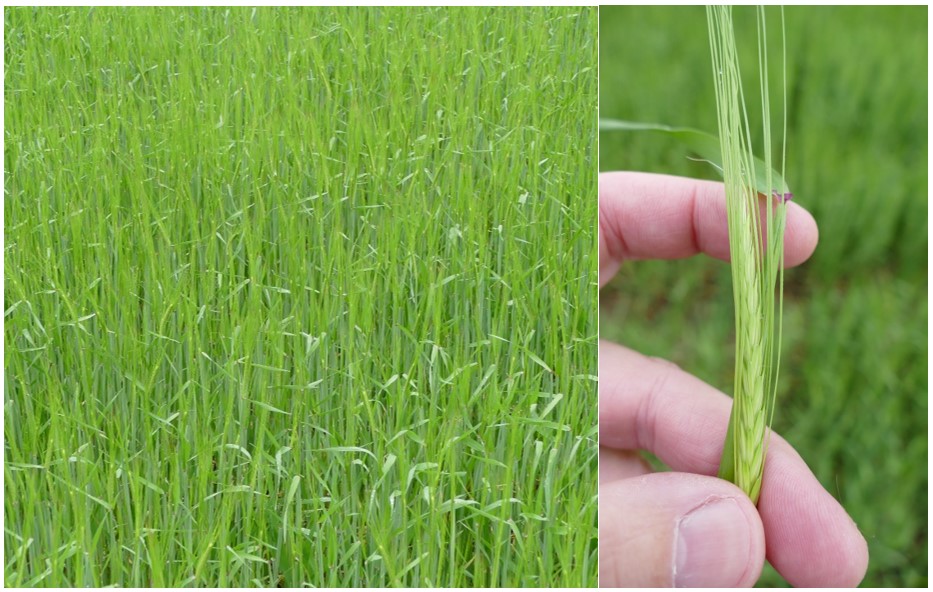
Alfalfa
Fields that had partial die-back on mature stands have begun to regrow. Phil Kaatz, MSU Extension forage educator, recommends not to cut too early and to allow regrowth of damaged plants. You will have a mix of quality in the hay, but that can be managed, and yields won’t suffer as much. For those fields that were already thinning and had greater loss due to freezing temps, the standard recommendation when assessing whether the stand remains viable is:
- 55-plus stems per square foot = good
- 30-55 stems per square foot = questionable
- Less than 30 stems per square foot = poor stand that should be replanted
Kaatz also said you should see a minimum of 12 plants per square foot just to have a viable stand. For more information on assessing alfalfa stands, read “Managing stand losses in alfalfa fields” from MSU Extension’s Kim Cassida and “Alfalfa stand assessment: Is this stand good enough to keep?” from UW-Madison Extension’s Dan Undersander.
Weed control
On this week’s MSU Extension Field Crops Virtual Breakfast, weed specialist Erin Burns discussed postemergence weed control considerations. She referenced the 2020 MSU Field Crop Weed Guide to identify several effective preemergence and postemergence herbicides that can be used in corn or soybean to manage weedy fields that may be out there from the tough 2019 season. With regards to considerations on spraying under cold conditions or following excessive rainfall events, the overall recommendation is to spray weeds that are healthy and actively growing. Don’t spray when nighttime temperatures are predicted to be below 40 F for one to two days before or after spraying (not an issue moving forward this season) or if plants are under stress due to waterlogged soils—weeds may not sufficiently uptake herbicide and crops will take longer to metabolize herbicide and have a higher risk of injury.




 Print
Print Email
Email